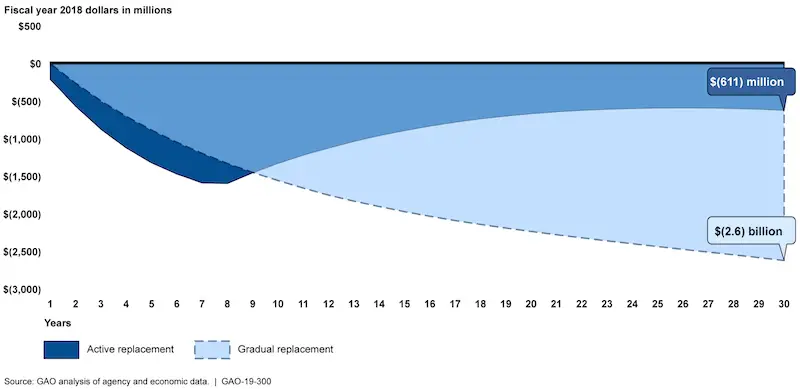From time to time, legislation gets introduced in Congress to eliminate dollar bills in favor of dollar coins. The lawmakers pushing the legislation always tout it as a way to save the government money. But would it really result in savings?
According to a new report from the Government Accountability Office, a dollar coin would not result in savings. It would, in fact, cost the government a lot of money to eliminate dollar bills according to the GAO report:
GAO’s analysis found that replacing the $1 note with a $1 coin would likely result in a net loss to the government over 30 years. GAO found the government would incur a loss of about $611 million if notes were actively replaced and about $2.6 billion if $1 notes were replaced gradually (see figure). These simulations represent the first time GAO has found that replacing the $1 note with a $1 coin would result in a net loss to the government rather than a net benefit.
Why is this the case?
GAO said that while it has found in the past that use of a coin would save money, times have changed. The difference today is largely due to the longer life span of dollar bills that didn’t used to exist:
Due to this substantially longer note lifespan, fewer $1 notes need to be produced over a 30-year period, which reduces the cost of producing them and diminishes the relative advantage of the long coin life. In our 2011 simulations, a $1 coin was assumed to last about 10 times as long as a $1 note (34 years to 3.3 years); in our current simulations, the lifespan of the coin remains the same but is now only about 4.3 times as long as that of the note (34 years to 7.9 years). Meanwhile, the relative cost of producing coins and notes has remained about the same.
The Federal Reserve has improved its process of producing dollar bills which makes them last longer and also results in having to produce fewer of them which ultimately lowers costs.



